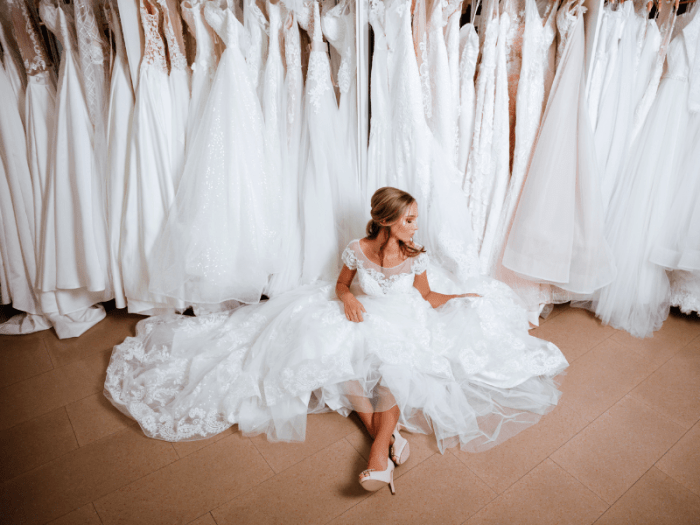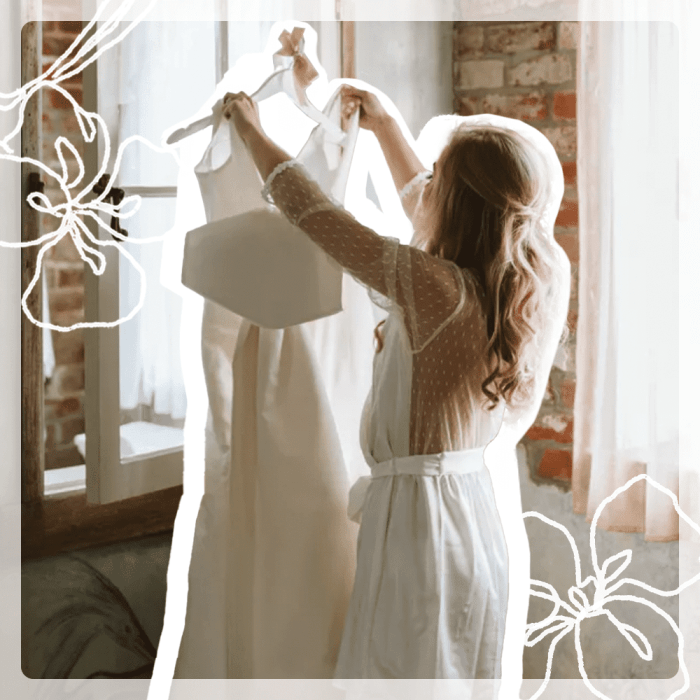Understanding the Cost of an Average Wedding Dress

Source: weddingsandbrides.com
Cost of average wedding dress – The cost of a wedding dress is a significant factor in wedding planning. This article explores the various elements influencing the price of a wedding gown, providing a comprehensive overview of average costs, market segments, and strategies for budget-conscious brides.
Defining “Average” Wedding Dress Cost, Cost of average wedding dress

Source: himisspuff.com
The average cost of a wedding dress varies greatly, depending on factors like designer and fabric. However, if you’re looking for a beautiful and relatively affordable option, consider the elegance of an a-line organza wedding dress, such as those you can find by checking out this selection of a line organza wedding dresses. Ultimately, the price will depend on the specific design and embellishments, but this style often offers a good balance of style and cost-effectiveness within the broader wedding dress market.
Defining the “average” wedding dress cost requires considering several variables. The price range significantly varies depending on factors such as style, fabric, designer, and geographical location.
| Style | Price Range (USD) | Material | Location |
|---|---|---|---|
| A-line, simple satin gown | $500 – $1500 | Satin | USA (Midwest) |
| Ballgown with lace appliqués | $1500 – $3000 | Lace, tulle | UK |
| Mermaid gown with beading | $2000 – $4000 | Silk, beads | New York City |
| Bohemian lace dress | $800 – $2000 | Lace, cotton | Australia |
Prices can fluctuate significantly between countries and even regions within a country. For example, a comparable dress might cost less in a less populated area compared to a major city due to lower overhead costs for boutiques.
Factors Influencing Wedding Dress Cost

Source: brides.com
Several key factors determine the final price of a wedding dress. Understanding these factors helps brides make informed decisions within their budget.
- Designer Brands: Established designers often command higher prices due to their reputation, craftsmanship, and use of premium materials. A dress from a renowned designer could easily cost several thousand dollars more than a similar style from a lesser-known brand.
- Fabric Quality: The type of fabric significantly impacts the cost. Luxury fabrics like silk, high-quality lace, and intricate beading increase the price considerably compared to more affordable options such as polyester or simpler cotton blends.
- Custom-Made vs. Off-the-Rack: Custom-made dresses typically cost more than off-the-rack options due to the bespoke design and tailoring process, involving numerous fittings and adjustments to achieve the perfect fit.
- Embellishments, Alterations, and Accessories: Intricate embellishments such as beading, embroidery, and hand-sewn details add to the overall cost. Alterations, while necessary for a perfect fit, also contribute to the final expense. Accessories like veils, headpieces, and belts further inflate the total cost.
Exploring Price Ranges and Market Segments
The wedding dress market caters to various budgets and preferences. Understanding the different price ranges helps brides find dresses that align with their financial plans.
The market can be broadly categorized into:
- Budget: (Under $1000) Typically features simpler styles, less luxurious fabrics, and may be purchased from online retailers or sample sales.
- Mid-Range: ($1000 – $3000) Offers a wider selection of styles and fabrics, including options from well-known brands and boutiques. Some level of embellishment is common.
- Luxury: (Over $3000) Includes high-end designer dresses crafted from premium materials with intricate detailing and superior craftsmanship. These often involve personalized consultations and fittings.
Examples of brands catering to each range include David’s Bridal (Budget), BHLDN (Mid-Range), and Vera Wang (Luxury).
Cost-Saving Strategies for Wedding Dresses
Finding an affordable wedding dress doesn’t mean compromising on style or quality. Several strategies can help brides stay within their budget.
- Shop Sales and Discounts: Bridal salons often have sample sales or seasonal discounts offering significant savings.
- Consider Off-Season Weddings: Weddings during the off-season (typically weekdays or non-peak months) might offer discounts from vendors, including bridal shops.
- Explore Pre-Owned Options: Buying a used or pre-owned wedding dress can be a cost-effective way to find a beautiful gown at a fraction of the original price.
- Set a Realistic Budget: Create a detailed budget that allocates a specific amount for the wedding dress, including alterations and accessories.
Illustrative Examples of Wedding Dresses and Their Costs
The following examples illustrate how different factors contribute to the price of a wedding dress:
- Dress 1: A simple A-line gown in crepe fabric. Estimated cost: $
800. Factors contributing to cost: Basic design, readily available fabric, minimal embellishments. - Dress 2: A lace mermaid gown with delicate beading. Estimated cost: $
2500. Factors contributing to cost: More complex design, high-quality lace, intricate beadwork, potential designer brand. - Dress 3: A custom-designed silk ballgown with intricate embroidery. Estimated cost: $5000+. Factors contributing to cost: Bespoke design, luxurious silk fabric, extensive hand-embroidery, custom tailoring, and likely a well-known designer.
Answers to Common Questions: Cost Of Average Wedding Dress
What is considered a “luxury” wedding dress?
Luxury wedding dresses typically exceed $3,000 and often feature high-end fabrics, intricate detailing, and renowned designer names.
Can I negotiate the price of a wedding dress?
Negotiating is possible, especially with independent designers or smaller boutiques. Be polite, respectful, and prepared to explain your budget constraints.
How long does it take to alter a wedding dress?
Alterations can take several weeks or even months depending on the complexity of the changes and the tailor’s workload. Plan accordingly.
Where can I find affordable wedding dresses?
Consider sample sales, online retailers, consignment shops, and off-the-rack options for budget-friendly choices.